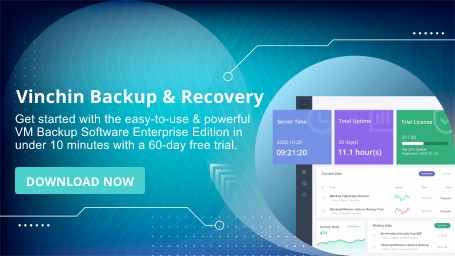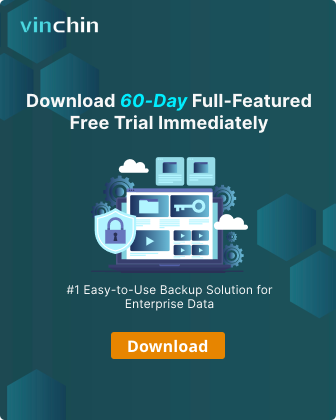-
What is NFS (Network File System)?
-
What is iSCSI (Internet Small Computer Systems Interface)?
-
Key differences between NFS vs iSCSI
-
When to Choose NFS vs iSCSI?
-
Why choose Vinchin for backup solutions?
-
NFS vs iSCSI FAQs
-
Conclusion
In modern IT infrastructure, data storage and sharing are crucial components for business operations. NFS (Network File System) and iSCSI (Internet Small Computer Systems Interface) are two commonly used network storage protocols, each with different methods of data sharing and access. This article will explore the differences between these two protocols, helping you choose the right one for your needs.
What is NFS (Network File System)?
NFS is a file-level storage protocol initially developed by Sun Microsystems in the 1980s. It allows different operating systems to share files over a network, particularly suitable for Unix and Linux environments.
How NFS works:
Clients request access to file resources on a remote NFS server, which mounts the resources to the client.
The client accesses remote files as if they were local files. NFS communicates using Remote Procedure Calls (RPC).
NFS uses file system caching to improve access speed to resources.
Advantages and disadvantages of NFS:
Advantages: Simple configuration, cross-platform support, ideal for file sharing and backup tasks.
Disadvantages: Being file-based, it does not offer the same performance as block-level storage, especially for large-scale data reads and writes.
Use cases:
File sharing, data backups, and distributed storage.
Well-suited for Unix/Linux servers and environments requiring shared file access.
What is iSCSI (Internet Small Computer Systems Interface)?
iSCSI is a block-level storage protocol designed to transport SCSI commands over IP networks. iSCSI allows storage devices to be accessed over a network as if they were local disks, commonly used in environments requiring high-performance storage.
How iSCSI Works:
iSCSI uses a client (initiator) and server (iSCSI target) connection.
The storage device appears as a local disk drive on the client, allowing the client to perform storage operations like accessing local disks.
iSCSI encapsulates SCSI commands into TCP/IP packets for efficient data transfer.
Advantages and disadvantages of iSCSI:
Advantages: Provides block-level storage, higher performance, ideal for virtualization, databases, and high-throughput applications.
Disadvantages: Configuration and management are more complex; an iSCSI initiator must be installed on the client, and there is no built-in conflict resolution mechanism for data sharing.
Use cases:
Virtualization platforms, database storage, and large-scale storage environments.
Well-suited for enterprise SAN (Storage Area Network) architectures, especially in high-performance use cases.
Key differences between NFS vs iSCSI
Feature | NFS | iSCSI |
Protocol Type | File-level storage | Block-level storage |
How It Works | Client accesses remote file system | Client accesses remote block storage |
Performance | Relatively lower performance, suitable for file sharing tasks | Higher performance, suitable for high-throughput applications |
Configuration Ease | Simple, especially in Linux environments | More complex, requires iSCSI initiator installation |
Conflict Resolution | Built-in file locking mechanism | No built-in conflict resolution, requires additional software |
Access Level | File-based access | Block-based access |
Use Cases | File sharing, data backups, shared directories | Virtualization, database storage, large-scale storage |
When to Choose NFS vs iSCSI?
Choose NFS: If you need file-level sharing and your environment is primarily based on Linux or Unix systems, NFS is a simple and efficient choice. It is especially well-suited for file backups, log storage, and cross-platform file sharing. NFS excels in environments where multiple clients need to access the same file.
Choose iSCSI: If you need high-performance block-level storage, especially for virtualization environments and databases, iSCSI is the better option. It provides near-local storage performance and fine-grained control, making it ideal for applications that require large amounts of random read and write operations.
Why choose Vinchin for backup solutions?
Both NFS and iSCSI offer distinct advantages for storage and data sharing, but when it comes to comprehensive backup solutions, Vinchin Backup & Recovery stands out. Whether you're working with virtual machines, file-level backups, or database backups, Vinchin provides a versatile and efficient backup solution tailored to your needs.
VM Backup: Vinchin supports backup for virtual environments, including VMware、Proxmox、Hyper-V、XenServer、XCP-ng、oVirt、RHV and etc. It ensures fast, reliable backups with advanced features like incremental backups, instant VM recovery, and cross-platform recovery.
File Backup: Vinchin offers an easy-to-use interface for managing file-level backups. Storage supporting NFS protocols can perform NAS backups, making it ideal for environments using NFS for file sharing, allowing secure backup of files to local or remote locations.
Database Backup: Vinchin also excels in database backup for popular platforms such as SQL Server and MySQL. With features like transaction log backup and point-in-time recovery, you can ensure data integrity and minimize downtime.
Vinchin's unified platform for VM, file, and database backup ensures that all your data, regardless of type, is efficiently protected without the need for multiple backup solutions. With features like cloud integration, real-time monitoring, and 24/7 support, Vinchin is the ideal choice for businesses looking for a reliable, all-in-one backup solution. Additionally, Vinchin offers a free 60-day trial to let users experience the functionality in a real-world environment. For more details, feel free to reach out to Vinchin directly.
NFS vs iSCSI FAQs
Q1: What are the main differences between NFS and SMB?
A1: Platform Adaptability: NFS is more suitable for Linux/Unix environments; SMB is mainly used for Windows, but is compatible with other systems.
File handling: NFS is based on file-level access; SMB provides richer file sharing features such as detailed permission settings.
Security: NFSv4 enhances security, but SMB offers stronger encryption and security options starting with SMB2.
Q2: How do I evaluate whether my network environment is suitable for NFS or iSCSI deployment?
A2: Network bandwidth, latency, and existing IT architecture should be considered before deployment. iSCSI requires higher network performance, especially when large block-level data transfers are involved. NFS is relatively easier to configure, but its performance is highly dependent on network conditions.
Conclusion
Overall, NFS excels in file sharing, especially for Unix/Linux environments, while iSCSI is ideal for virtualization and database applications with its high-performance block-level storage advantages. If you are looking for a comprehensive and efficient backup solution, Vinchin, with its powerful virtual machine, file and database backup features, can protect your data and ensure that both large-scale data protection and daily backup tasks can be handled with ease.
Share on:






